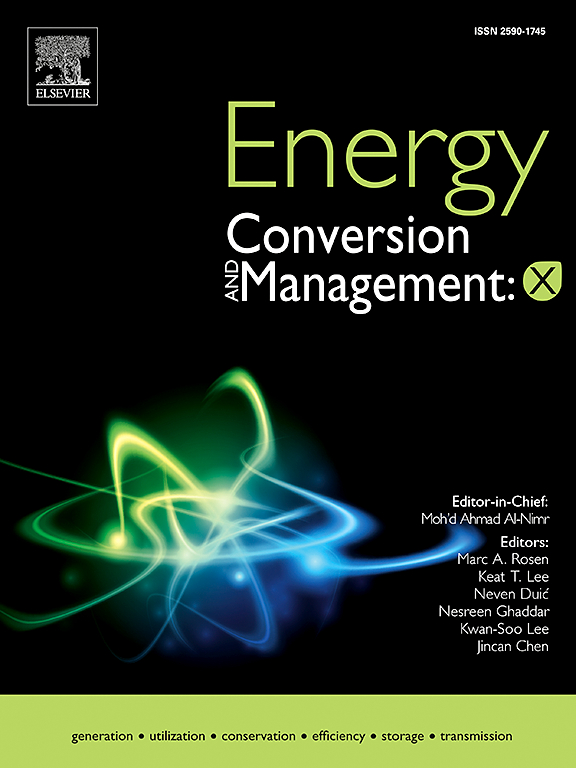Electrical Performance and Degradation Analysis of Field-Aged PV Modules in Tropical Climates: A Comparative Experimental Study
IF 7.1
Q1 ENERGY & FUELS
引用次数: 0
Abstract
Performance degradation is a prevalent phenomenon in solar photovoltaic systems globally, with varying aging profiles and effects depending on environmental and climatic conditions. This paper presents an extensive investigation of the electrical performance, aging mechanisms, and degradation analysis of field-aged PV modules under the tropical climate of Malaysia. Utilizing a combination of visual inspection, I-V curve measurement, and thermal imaging techniques, this research provides a comprehensive assessment of the electrical and thermal properties of field-aged PV modules from two locations in Malaysia over extended periods (8 years at UMPSA and 10 years at Pasir Mas). The multi-faceted approach of the study allows for a deeper understanding of the degradation process, offering insights into the causes and effects of higher current and lower voltage in aged modules. The study found the average annual degradation rates at UMPSA were 0.3% for open circuit voltage (), 0.23% for short circuit current (), 0.81% for maximum power (), and 0.35% for fill factor (FF) and at Pasir Mas, the average annual degradation rates were 1.124% for Voc, −0.166% for Isc, 1.276% for Pmax, and 0.43% for FF. The study also found that monocrystalline silicon (m-Si) panels experienced an average power degradation of 6.48%, while polycrystalline silicon (p-Si) panels showed a higher degradation of 12.76%. However, Thermal imaging revealed significant temperature variations across the modules, with hotspots reaching up to 11.2 °C above cooler areas in UMPSA panels and an even more pronounced 26.1 °C difference in Pasir Mas modules. These temperature disparities highlight the uneven heat distribution and potential performance issues in the panels. This research contributes to the understanding of PV module degradation in tropical climates and aligns with sustainable development, climate change mitigation efforts, and SDG 7 by promoting sustainable energy solutions.
热带气候下野外老化光伏组件的电气性能和退化分析:对比实验研究
性能退化是全球太阳能光伏系统的普遍现象,其老化情况和影响因环境和气候条件而异。本文对马来西亚热带气候下实地老化光伏组件的电气性能、老化机制和退化分析进行了广泛调查。这项研究结合使用了目视检查、I-V 曲线测量和热成像技术,对马来西亚两个地点的实地老化光伏组件的电气和热性能进行了全面评估,评估时间跨度较长(UMPSA 为 8 年,Pasir Mas 为 10 年)。这项研究采用了多方面的方法,有助于深入了解退化过程,深入了解老化组件电流增大和电压降低的原因和影响。研究发现,在 UMPSA,开路电压(Voc)的年平均衰减率为 0.3%,短路电流(Isc)为 0.23%,最大功率(Pmax)为 0.81%,填充因子(FF)为 0.35%;在 Pasir Mas,开路电压(Voc)的年平均衰减率为 1.124%,短路电流(Isc)为 -0.166%,最大功率(Pmax)为 1.276%,填充因子(FF)为 0.43%。研究还发现,单晶硅(m-Si)电池板的平均功率衰减率为 6.48%,而多晶硅(p-Si)电池板的衰减率更高,为 12.76%。然而,热成像技术显示组件的温度差异很大,在 UMPSA 面板中,热点温度比冷点温度高出 11.2 °C,而在 Pasir Mas 组件中,差异甚至达到 26.1 °C。这些温度差异凸显了电池板热量分布不均和潜在的性能问题。这项研究有助于了解热带气候下的光伏组件退化情况,并通过推广可持续能源解决方案,与可持续发展、减缓气候变化的努力以及可持续发展目标 7 保持一致。
本文章由计算机程序翻译,如有差异,请以英文原文为准。
求助全文
约1分钟内获得全文
求助全文
来源期刊

Energy Conversion and Management-X
Multiple-
CiteScore
8.80
自引率
3.20%
发文量
180
审稿时长
58 days
期刊介绍:
Energy Conversion and Management: X is the open access extension of the reputable journal Energy Conversion and Management, serving as a platform for interdisciplinary research on a wide array of critical energy subjects. The journal is dedicated to publishing original contributions and in-depth technical review articles that present groundbreaking research on topics spanning energy generation, utilization, conversion, storage, transmission, conservation, management, and sustainability.
The scope of Energy Conversion and Management: X encompasses various forms of energy, including mechanical, thermal, nuclear, chemical, electromagnetic, magnetic, and electric energy. It addresses all known energy resources, highlighting both conventional sources like fossil fuels and nuclear power, as well as renewable resources such as solar, biomass, hydro, wind, geothermal, and ocean energy.
 求助内容:
求助内容: 应助结果提醒方式:
应助结果提醒方式:


